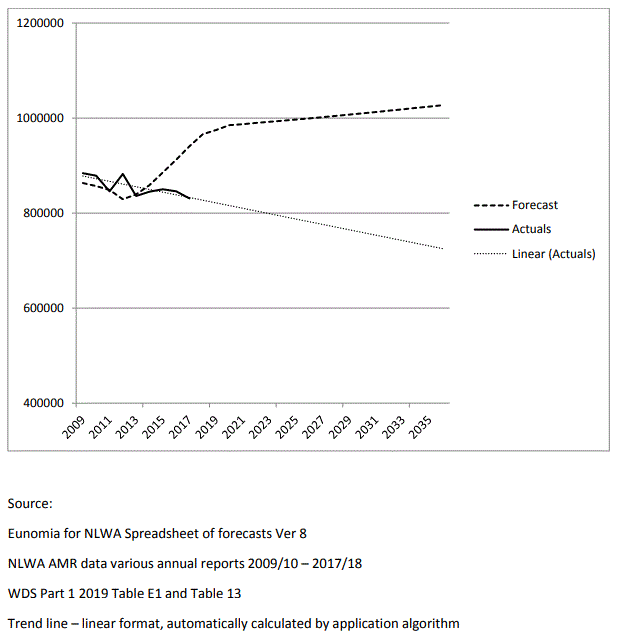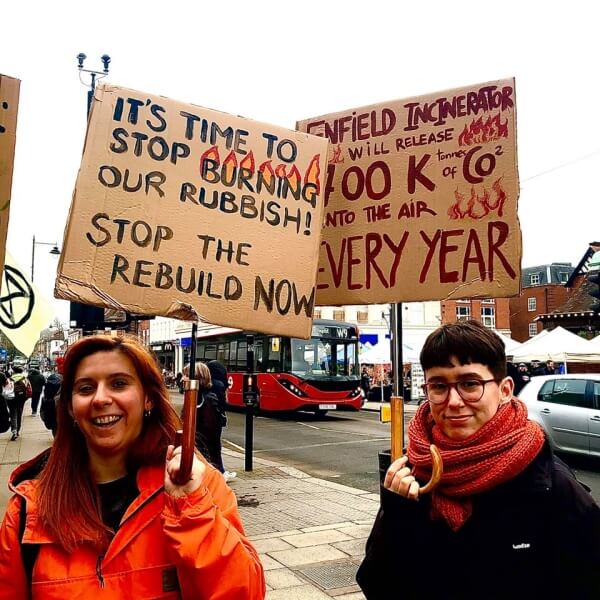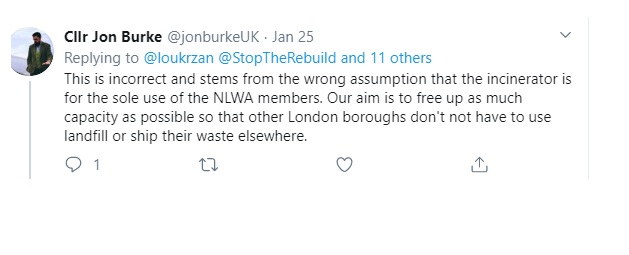 Standing at the brow of Station Road N21 gives a splendid view of the current Edmonton Incinerator, tucked away as it is in the dip to lessen the dispersal effect of its big stack. Come 2025, after an OK from the Secretary of State, this 50 year old burner will be replaced by a new, significantly bigger burner, expected to be around for at least 30 and most likely 50 years – call it 2070. World temperature will then be …..
Standing at the brow of Station Road N21 gives a splendid view of the current Edmonton Incinerator, tucked away as it is in the dip to lessen the dispersal effect of its big stack. Come 2025, after an OK from the Secretary of State, this 50 year old burner will be replaced by a new, significantly bigger burner, expected to be around for at least 30 and most likely 50 years – call it 2070. World temperature will then be …..
Consultation input was extremely sparse, possibly because even now not many seem to know of the plans. I made a case at the time, based on the project’s own numbers, that its processing size should be no more than 450,000 tonnes per annum rather than the proposed 700,000 (the current one is 500,000).
Totally ignored, but once the consultation was over the plans were rapidly changed to include sourcing waste from a 50 mile radius and not simply the originally stated North London, as well as to additionally burn commercial waste, not simply municipal (household) as had been proposed at the time of consultation. So it seems that someone’s analysis might have been in the right ball park.
 But the SofS agreed it and a recent legal case failed to gain a review of the plans. The group, Stop the Edmonton Incinerator, centred in Chingford (the sort of Ground Zero for the plume), nonetheless are continuing their fight.
But the SofS agreed it and a recent legal case failed to gain a review of the plans. The group, Stop the Edmonton Incinerator, centred in Chingford (the sort of Ground Zero for the plume), nonetheless are continuing their fight.
The burner will receive the majority of its feedstock from North London’s black bins. It’ll turn the 700,000 tonnes of waste pa into roughly an equivalent amount of climate impacting CO2 gas plus a range of nasties. “Skyfill”, as it’s commonly termed.
The presentation, given last week in Chingford by a hugely impressive local activist mum Carina Millstone, needed no support from me - the purpose of my invitation – for she nailed it.
Her presentation can now be downloaded from the site stop-edmonton-incinerator.org, but in a brief summary I would see the case made as:
We’ve seen recent and fundamental changes in fundamental decision-influencing issues:
- Air pollution / quality has gone from zero to hugely important;
- Climate, and so the huge quantities of CO2 influencing gas the burner will release for 50 years, is now an emergency;
- After years of saying waste levels would go UP, both facts and now an acknowledgement from the boroughs and the Waste Authority, confirm they are in fact going DOWN. (And with dampening factors such as climate change and growing public awareness of the impacts of consumption and associated waste, PWA made a powerful case at last year’s Public Examination that such a trend would continue.)
So, let’s pause and think if a 50 year commitment is the right thing to do was the conclusion, and the request.
Waltham Forest Deputy Leader and Chair of the North London Waste Authority Councillor Clyde Loakes has apparently pinned this as a “Labour Party project”. (Six of the seven boroughs are-Labour led, 12 of the 14 NLWA Board Members).
Mayor Khan is said to have washed his hands of it because it was agreed before his term; so that approach rather than one following Keynes' seemingly more appropriate approach to situations that “when facts change I change my mind”.
Here’s a monumental spend (oh, the expected costs of which have just doubled) right in our borough, in one of the more deprived parts of our borough, committing us to huge loan repayments for the next 40 years and which is going against the key grain of several current macro trend issues, not least public health and a climate emergency.
So we have a “Labour Party project”, with a 20th century linear waste solution for a 21st century circular economy problem. Let’s see how much of a climate emergency commitment we seemingly have signed up to.
(And Carina has plans to answer the inevitable, “but the waste has to go somewhere”.)
Links
Download the January 2020 presentation slides
Public consultation: North London Heat and Power project (Palmers Green Community 3 June 2015)



